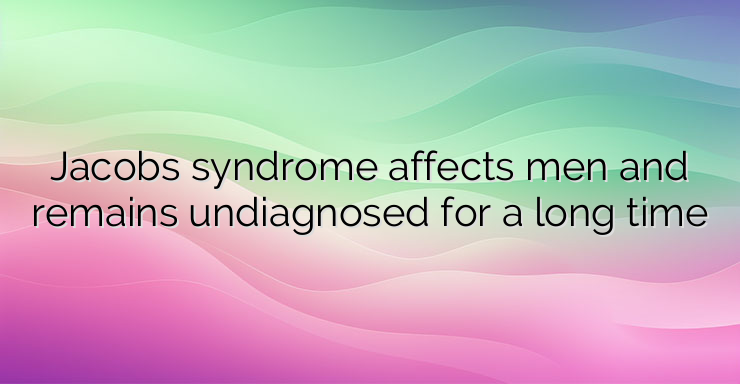Jacobs syndrome, also known as 47,XYY syndrome, is a rare genetic disorder that occurs in about 1 in 1,000 male babies. It belongs to a group of conditions known as “sex chromosome trisomies,” with Klinefelter syndrome being the more common type. The most common physical feature of the disorder is increased height, which usually becomes noticeable after five or six years of age. In Jacobs syndrome, the affected child has an extra Y chromosome from its father. Although many patients go undiagnosed due to mild symptoms, the disease appears to pose an increased risk for certain co-morbidities such as asthma, seizures, autism spectrum disorder, learning disabilities and behavioral problems. Early studies found that men with Jacobs syndrome were more likely to exhibit antisocial behavior than those without the genetic disorder. The average age of diagnosis of Jacobs syndrome is approximately 17 years, with many patients being screened for infertility concerns. The severity of Jacobs syndrome can vary greatly, and in fact in many cases relatively few or no phenotypic abnormalities are present. More severe cases of the syndrome may present with macroorchidism (enlarged testicles), tall stature, macrocephaly (abnormally large head), and hypertelorism (increased distance between two parts of the body, usually the eyes), among other characteristics. Although infertility is present in some cases of Jacobs syndrome, those affected with the disorder who are able to reproduce often have offspring with normal karyotypes. Jacobs syndrome is not an inherited disease. Normally, males have 46 chromosomes, including one X and one Y chromosome. Males with Jacobs syndrome (XYY) have 47 chromosomes � two of which are Y chromosomes. Most cases of XYY syndrome are due to an error in sperm cell division before conception. Rarely, the cell division error occurs after conception, resulting in mosaicism (the abnormality affects only some of the cells in the body), with cells with 46 chromosomes and cells with 47 chromosomes. The exact cause of these errors in cell division is not clear. The diagnosis of Jacobs syndrome is based on a thorough clinical evaluation, a detailed history (anamnesis) of the patient, and specialized tests (such as chromosome analysis) that detect the presence of an extra Y chromosome (47,XYY karyotype). Treatment of Jacobs syndrome is symptomatic and supportive. References: 1. Leggett V, Jacobs P, Nation K, et al. Neurocognitive outcomes of individuals with a sex chromosome trisomy: XXX, XYY, or XXY: a systematic review 2. Ross J, Zeger M, Kushner H, et al. An extra X or Y chromosome: contrasting the cognitive and motor phenotypes in childhood in boys with 47,XYY syndrome or 47,XXY Klinefelter syndrome 3. Visootsak J,Graham J. Social function in multiple X and Y chromosome disorders: XXY, XYY, XXYY, XXXY 4. National Center for Biotechnology Information (NCBI). Brittany Sood; Roselyn W. Clemente Fuentes. Jacobs Syndrome


Leave a Reply